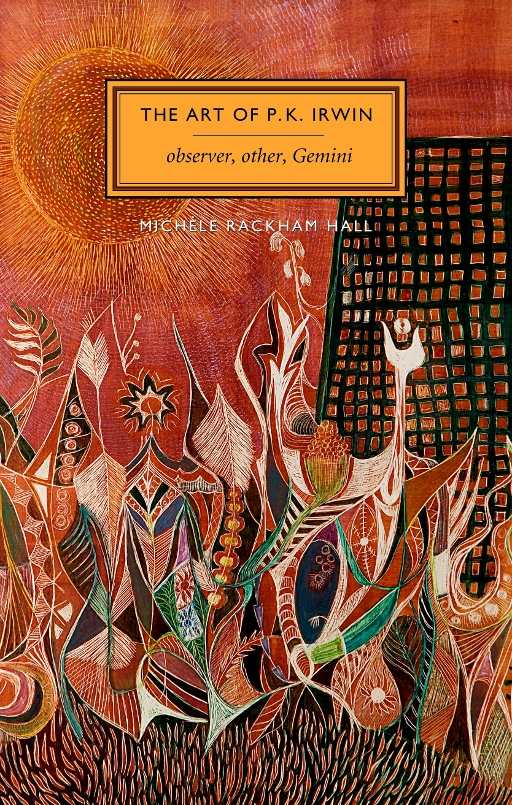The Art of P K Irwin
observer, other, Gemini
- 2016 INDIES Finalist
- Finalist, Women's Studies (Adult Nonfiction)
Hall’s volume draws meaning and continuity from the vast and diverse body of P. K. Irwin’s visual art.
Within a series dedicated to the work of the lauded Canadian poet P. K. Page, Michèle Rackham Hall’s The Art of P.K. Irwin captures and contextualizes the writer’s complimentary work as a visual artist. Reflective writing and a wealth of supportive visual material make for an entrancing and informative volume.
Drawing from personal research, Page/Irwin’s own writings, and time spent with the artist herself, Rackham Hall creates a portrait of an artist who never stopped experimenting with form—or finding ways to let her art articulate that which she was feeling most acutely.
A strategically added diary entry assigns the beginning of Irwin’s visual artistic work to her time in Brazil, though Irwin had always doodled and experimented before that station as well. In that lush and vibrant setting, she suddenly found more cause–and encouragement—to turn from her poetic work and concentrate on experimenting with pens and color.
Personal tragedies and challenges are shown to have led to new creative bursts, as when a health crisis prompted works that were both elusive and deeply personal, and “abstraction began to dominate [her] oeuvre.” Irwin was drawn toward paper and canvas in times of spiritual quests and personal darkness, and sought out lessons and directions from fellow artists, even when sometimes such lessons seemed as much “barriers to her creative agency” as they did give her new means to express herself.
From natural to amorphous shapes, and from intricate and labyrinthian lines to stark geometric forms, Hall traces the artist’s development. Rackham Hall shows the influence of New York School artists such as Mark Tobey upon her work, especially when it came to integrating her inclinations as a poet with her new-found role as a visual artist.
She also examines the impact of Irwin’s personal life shifts on her creative practice. From moves to New York’s exploding art scene to Mexico, which she found dark and depressing, and back to Canada, where she recollected her poetic footing, Irwin’s confidence with various media shifted.
The white lines and lyric forms of Irwin’s works are put into context, and colorful bursts in later work—as she found confidence with oils and tempera, and began to experiment with gold leaf—make for stunning additions on the page. Spiritual influences round out the work, both in the evocative celestial and geometric forms within pieces of art, and via Irwin’s own words: “in all essential particulars writing and painting are interchangeable. They are alternate roads to silence.”
Hall’s volume draws meaning and continuity from the vast and diverse body of P. K. Irwin’s visual art, and is both a contemplative and sensory pleasure to journey through.
Reviewed by
Michelle Anne Schingler
Disclosure: This article is not an endorsement, but a review. The publisher of this book provided free copies of the book and paid a small fee to have their book reviewed by a professional reviewer. Foreword Reviews and Clarion Reviews make no guarantee that the publisher will receive a positive review. Foreword Magazine, Inc. is disclosing this in accordance with the Federal Trade Commission’s 16 CFR, Part 255.

